Inverter vs. Transformer Welder: Which is Better for Your Needs?
Last Updated on
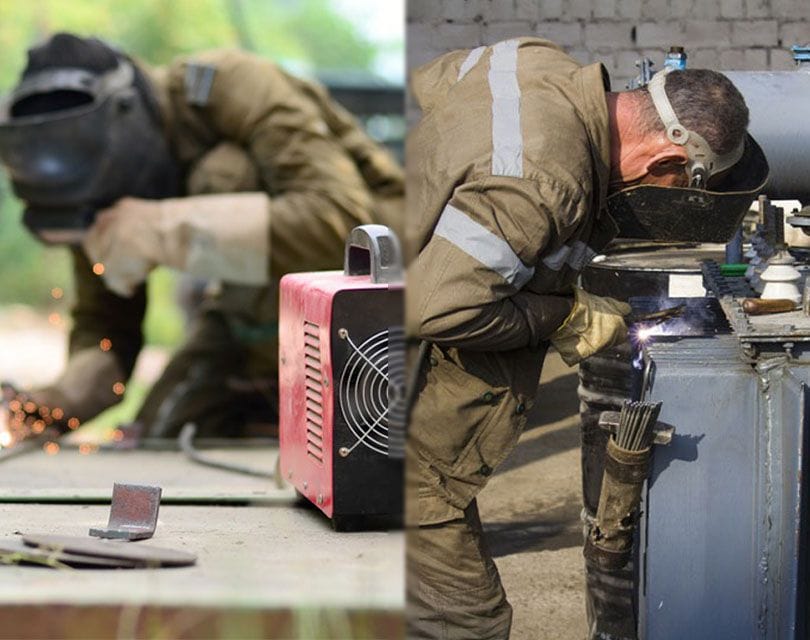
Electric welding machines have been in use for more than 100 years. Similar to any technology, welding machines nowadays are significantly more enhanced than those of previous decades.
However, there’s something to be said about old-school reliability as well. Many welding professionals have a choice when it comes to transformer or inverter welding machines.
However, your preference should depend on which is the better match for the work at hand. To help you, we’ve compiled all the essential information about welders for you to have a better insight into how they work, and lastly, select the one that suits you best. Here are the inverter and transformer welding machines in detail. Read on!
Inverter Welder Overview
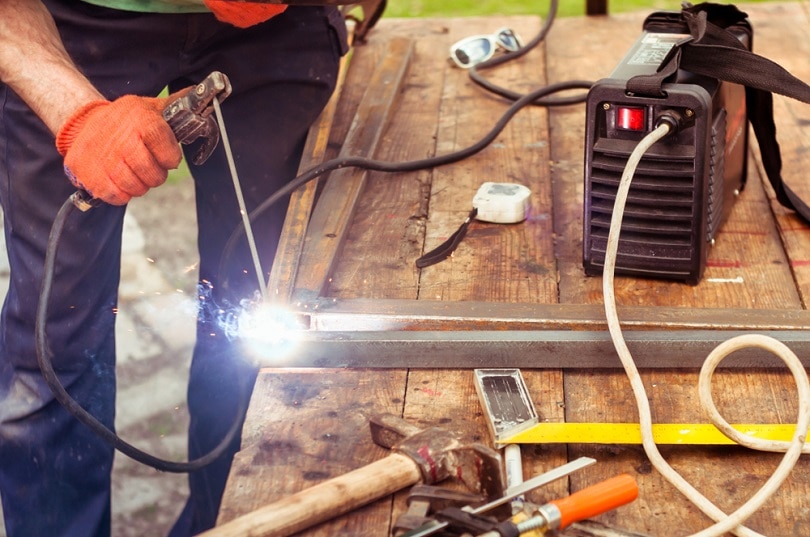
How Does It Work?
An inverter welding machine converts alternate current to a lower usable voltage output. For instance, from 240V AC power supply to 20V DC power output. Inverter-based appliances use a couple of electronic parts to transform power.
On the contrary, traditional transformer-based appliances primarily rely on one large transformer to control the voltage. An inverter operates by increasing the primary power supply frequency from 50Hz up to 20,000 – 100,000Hz.
This is done using the electronic buttons that switch the power on and off fast (up to one-millionth of a second). By using this way to control the power supply before it gets into the transformer, the size of the transformer can be greatly lessened.
Notable Features
Better Efficiency
With the inverter welding machine, you can adjust the weld bead profile as per the thickness you require. Inverter welders improve the appearance of the weld and at the same time maintain the welding quality.
The inverter welder’s mechanism is highly efficient and stays chilly even with the elongated operation. Usually, they use minimal filter metal. They efficiently reduce heat input and provide superior productivity.
Efficiency and Power Saving
Not only are inverter welding machines energy-efficient, but also back stress-free and no-cost connection. These inverter welders are a perfect replacement for conventional welders when it comes to generating heat and consuming energy.
An inverter welding machine has a power output of up to 93% as compared to conventional welding machines. The production level of conventional welders is 60%. The inverter significantly lessens the transformer and size of the reactor and the welder’s weight.
The comparable loss of power (mostly conductor energy consumption and magnetic core loss) is also significantly lessened.
Cooling Facility
These brilliantly made inverter welding machines have an inner cooling fan. It lessens operating heat and stops extra heat from being produced. With the help of cooling fans, not only do machines stop overheating, but also lead to an increase in the life expectancy of the devices.
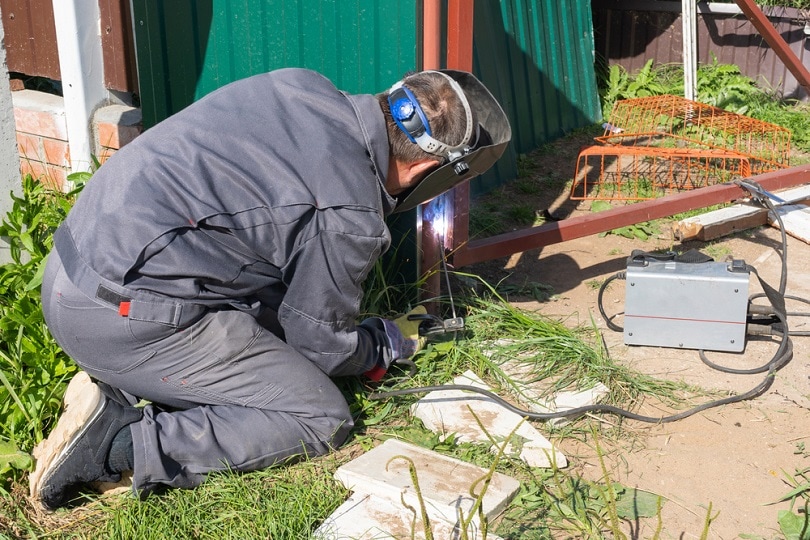
Output Voltage and Present Stability
Many traditional welding machines use alternating current (AC) and, therefore, these appliances don’t get continuous current and power output.
In such a case, these machines’ arcs need several re-ignitions, around 100 to 120 times every second. Contrary to conventional welding machines, the inverter welder doesn’t take long to generate heat.
These machines can maintain a constant current flow. It stops voltage and temperature unsteadiness as these machines have anti-interference. Essentially, welding machines come with anti-interference and have a lower probability of temperature changes and voltage fluctuations.
Because current direction and voltage changes frequently, traditional inverter welders use AC power. The arc can be put out and lighted up to 120 times a second. The arc isn’t constant and burns steadily. It leads to a lengthy heating time. And its strength lessens weld.
IGBT Techniques
These inverter welding machines can quickly gather power using any gate current appliance. This is possible because of its insulated gate bipolar transistor technology. The inverter welder’s switch also operates fast and uses less energy to do the final operation.
Compact and Lightweight Model
Because of its minimal design, you can the inverter welding machine nearly everywhere. As compared to other conventional welding machines, these welders are compact. You can stow them in any compact space, thanks to the device’s space-saving structure.
The design is sufficiently compact such that you can store it in a confined space completely. The transformer’s weight and size will be lessened significantly since the inverter welding machine’s frequency is much higher than the running frequency.
Similarly, a considerable increase in the size, the reactor’s weight, and the operating frequency will be greatly minimized.
- Low power consumption.
- Provide superior control of the electric arc.
- Comes with a cooling fan to safeguard the parts from heat.
- It’s portable.
- They’re less durable as compared to conventional transformer welding machines.
- Expensive repair costs.
Transformer Welder Overview
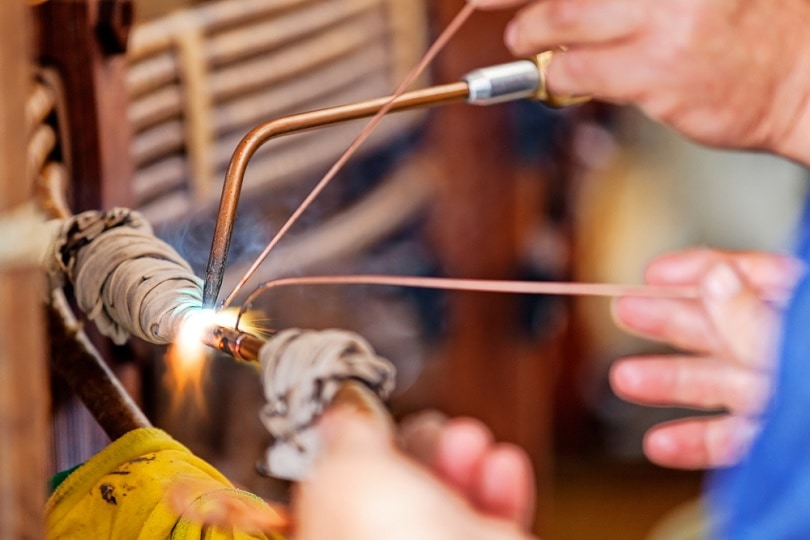
How Does It Work?
Transformer welders are a more conventional welding option. These high-performance devices are the workhorse of the industry and require mains power. They’re mostly used for industrial rod welding applications. They come in sizes from 250A to 600A at 415V.
The transformer welder permits the welder to choose the output current by moving a winding closer or away from a secondary winding. It can also move a magnetic shunt inside and out of the transformer’s core, utilizing a series saturating reactor with an alterable approach in series with the secondary current output, or by just allowing the welder to choose the output voltage by tapping on the secondary winding of the transformer.
These transformer-style appliances are usually the most cost-effective.
Distinctive Features
A special feature of the transformer welding machine is that AC is applied to the electrode. It implies that the conversion is activated. Due to this, the metal spatter increases, this, in turn, affects the seam’s quality.
The transformer’s effectiveness is about 80% as most of the energy is used in heating the “iron” of the appliance. The devices are split into a household, producing a current of up to 200 Amperes, professional and half-professional, up to 300 Amperes, and another one exceeding 300 Amperes.
When it comes to utilizing the appliance in domestic situations, an electric one-phase current of 220 volts is used. However, most expert devices frequently use a 380 volts three-phase current.
Reliability
Most people debate on a welder’s reliability. For almost a century, transformer welding machines have been having an all-inclusive study and development to produce dependable and sturdy machines, while inverter welders have received similar attention for only 30 years.
Transformer welding machines are more dependable as compared to the best inverter welders. However, the gap has narrowed significantly in the present years. Those days back in the 1990s when inverter failures triggered nightmares, are gone.
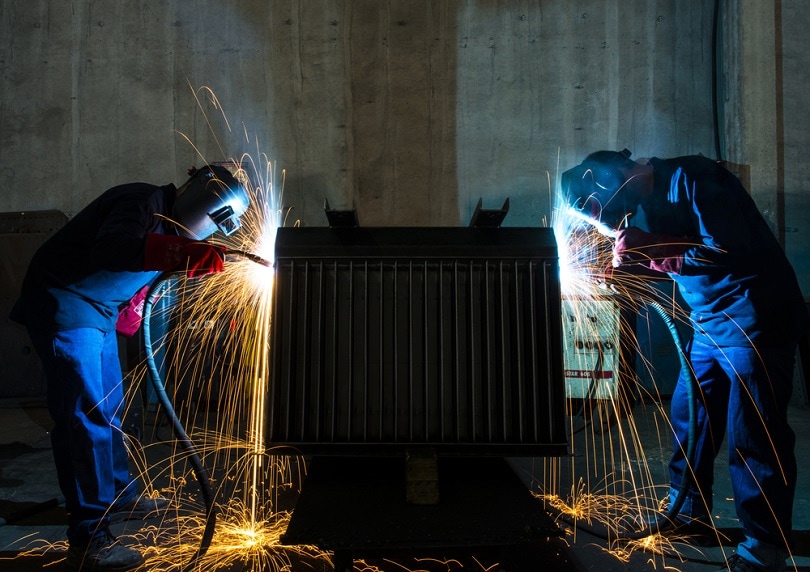
Potential Limitations
The overall trend is that transformer welding devices are more simple but reliable, while inverter welding machines may integrate numerous diverse procedures with lessened reliability.
The other consideration is how the device will limit you in the medium to long term. If these devices are properly taken care of, they can last a significant amount of time. If you own a transformer welding machine, it’ll be heftier and less feature-rich as compared to an inverter welding appliance.
Would you like to buy extra equipment to have similar performance an inverter welder can offer? Or do you require the dependability of a transformer-based welder, but also need something you can carry as a backup which is provided by an inverter welding machine?
Downtime
Several applications can lead to premature destruction to inverter welders, like extra airborne pollutants and high humidity. Manufacturers have attempted to create products that are more bendable to failure from environmental issues.
However, they’re always more prone to failure. If your machine fails, you’ll not be able to use it until it’s fixed. But, how is this going to interfere with your daily operations? If you’re just a hobbyist, this will not hold back essential projects or interfere with your income.
Although your machine is crucial to the smooth running of your business, you need to take into account the impact of downtime you’ll have. If the surroundings you’re in contributes to premature breakdown and is beyond your control, it’s worth having a more dependable device that’s simpler as compared to a versatile appliance that won’t function.
In such a case, a transformer welding machine is your best bet as it’s durable, reliable, and doesn’t fail often.
Range of Application
Transformer welding machines are unassuming appliances and are used in nearly every scope of human activity where welding compounds of ferric metals are needed.
- Mending and laying of pipelines.
- Welding of plumbing pipelines.
- Attachment of metallic structures at a building site.
- Connection of sheet materials, the two with a joint, and with an overlap.
- The initial cost is low.
- It’s ideal for farm repair.
- The welder is maintenance-free.
- The running expenses are also relatively low.
- It’s highly reliable.
- Igniting the arc is challenging.
- It’s sensitive to a reduction in voltage in the network.
Inverter vs Transformer Welder: Which is Right for you?
While inverter welding machines have benefits over transformer welders, not all of these benefits may be helpful to you. The ultimate choice eventually boils down to user preferences.
We’ve given you all the nitty–gritty to help you take into account your requirements and figure out what’s suitable for you. Also, we’ve put together a list of differences between inverter and transformer welding machines while considering factors such as durability, weight, cost, and more.
Let’s dive right in!
Permanence
Inherently, transformers have higher duty cycles. Therefore, theoretically, they can tackle more heavy-duty tasks than inverter welding machines. At this point, inverters are new in the shops and, therefore, their durability is uncertain.
Right now, we know the durability of transformer welding machines as they’ve been in use long enough to analyze and enhance their permanence. That said, inverter technology is unbelievably fascinating as you can pack a lot of power into a small lightweight package.
Costs
There has been a long-standing debate on the pricing between the inverter and transformer welders. Many transformer welding machines are budget-friendly when it comes to upfront costs.
But, in the long run, an inverter welder will save you a lot of money. All this comes down to cost over time. To begin with, inverter welding machines consume less power. Although the exact cost tends to be overstated, many professionals concur that you can save around 10% on your electricity bill.
Inverter welding machines also utilize fewer consumables and welding gas due to their increased arc stability. Over time, it’s not crazy to say that welding machines will pay for themselves.
Weight
When compared to transformer welding machines, inverter welders are lightweight. They’re even half the size of several transformer machines. If you’re carrying out immobile tasks in a large area, a big, hefty transformer welding machine wouldn’t be more of an issue.
However, if you’re intending to move your welder around or the room is restricted, an inverter welder is the best bet.
Stability and Effectiveness
In the past 50 years, transformer welding machines have come a long way. Using a premium quality welding machine, you can attain an appealing efficiency level while still maintaining a relatively stable arc.
However, as compared to inverter welding machines, it’s nothing. Most inverter welders are twice as effective as transformer welding machines. For instance, when compared to a transformer welder, an inverter welding machine uses half the amperes to get a similar amount of volts.
Because of this, most inverter welders can operate using an ordinary house socket and, therefore, you don’t need to purchase a generator or a large 220V plugin.
For a long time, inverter welding machines used DC (Direct Current). Although they had a more stable arc than ordinary DC transformer welding machines, only one option for alternate current welders was available.
Nowadays, inverter welders can use both DC and AC. And, as inverter welders are more effective, they can generate a more stable arc. Because of this, inverter welding devices are the best bet when it comes to effectiveness and stability.
Quality of the Welds Produced
Since we’re debating on welding machines, let’s get to the heart of welding and deliberate on the arc and the welds made. If you’re the kind of welder who handles placid steel the entire day, every day, you don’t have to search past a transformer welding machine.
However, we reside in a world that requires welding perfection in every position and on every material. Inverter welders begin to shine in this demanding world. Because inverter welders can be programmed to perform anything, we now see enhanced pulse MIG operating similar to highly skilled TIG.
Software and enhanced electronics open up a world that has fundamentally changed the capabilities of a welding machine. At times, it even makes an average welder appear pretty good.
When it comes to weld quality and innovation, an inverter welding machine is the best choice. However, you can still keep it simple for steel.
Duty Cycle
In general, inverter welding machines can achieve much higher duty cycles as a result of the size of the transformer. Although an inverter welder’s smaller parts heat up fast, they can be cooled down much faster and easier.
However, in traditional transformer welders, the parts are much larger and, therefore, tend to retain heat and take a long time to cool down.
- See also: What are Taps on a Welding Transformer?
Use of Generator Power
Being effective implies that utilizing generator power is more possible with inverter welding machines, which can run on smaller portable generators. It’s impossible with conventional transformer welders.
However, you should note that there are dangers involved if you use power from a generator.
Functionality
When compared to traditional transformer welders, the performance of high-quality inverter welding machines is considerably superior. This is particularly conspicuous with stick (MMA) welding in which operators find that welding is easier and they don’t need to “fight” the arc.
Mainly, it’s because of the ability of inverter welding machines to have higher open-circuit voltages and integrate features like Anti-Stick, Arc Force, and Hot Start. A primary example of this is welding slim materials: using a traditional stick welder, this is infamously hard if not impractical.
However, with inverter welding machines that have limitless amperage adjustment and a stable arc, the power can be greatly reduced so that, for instance, 1.6 mm sheet of metal or pipe sections can be welded considerably easier and in a controlled manner.
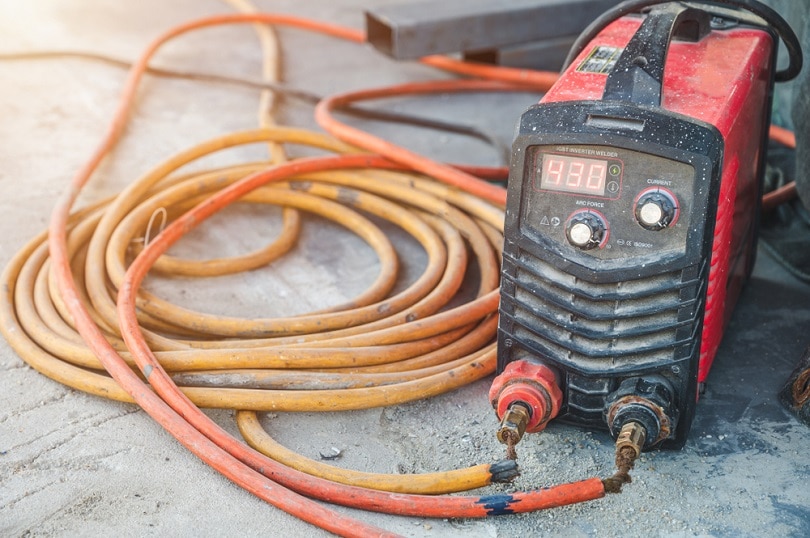
What is IGBT Technology?
The initials IGBT represent “Insulated Gate Bipolar Transistors”. They’re high-speed switching appliances used in all Weldless welders which make voltage regulation easy.
Several inverter welding machines utilize older MOSFET technology or transistors. IGBT technology provides considerable benefits over MOSFETs. Perhaps a crucial benefit is that IGBT s are less prone to generator power fluctuations and mains, making them more dependable and less vulnerable to failure or damage.
When to Use an Inverter Welding Machine
When to Use a Transformer Welder
Inside in a regulated environment
In dusty and dirty environments
You can use it on numerous types of base metal
You can use it on the same metal day in day out
Final Thoughts
In the last 15 years, inverter welding machines have undergone rapid transformation. They’re constantly improving both functionality and cost. However, that doesn’t imply that we have to bury transformer welding machines as they also have a crucial place in the industry.
Ultimately, it all comes down to an individual weighted decision depending on numerous factors.
Featured image credit: (L) Mehaniq, Shutterstock | (R) Alan Sau, Shutterstock
